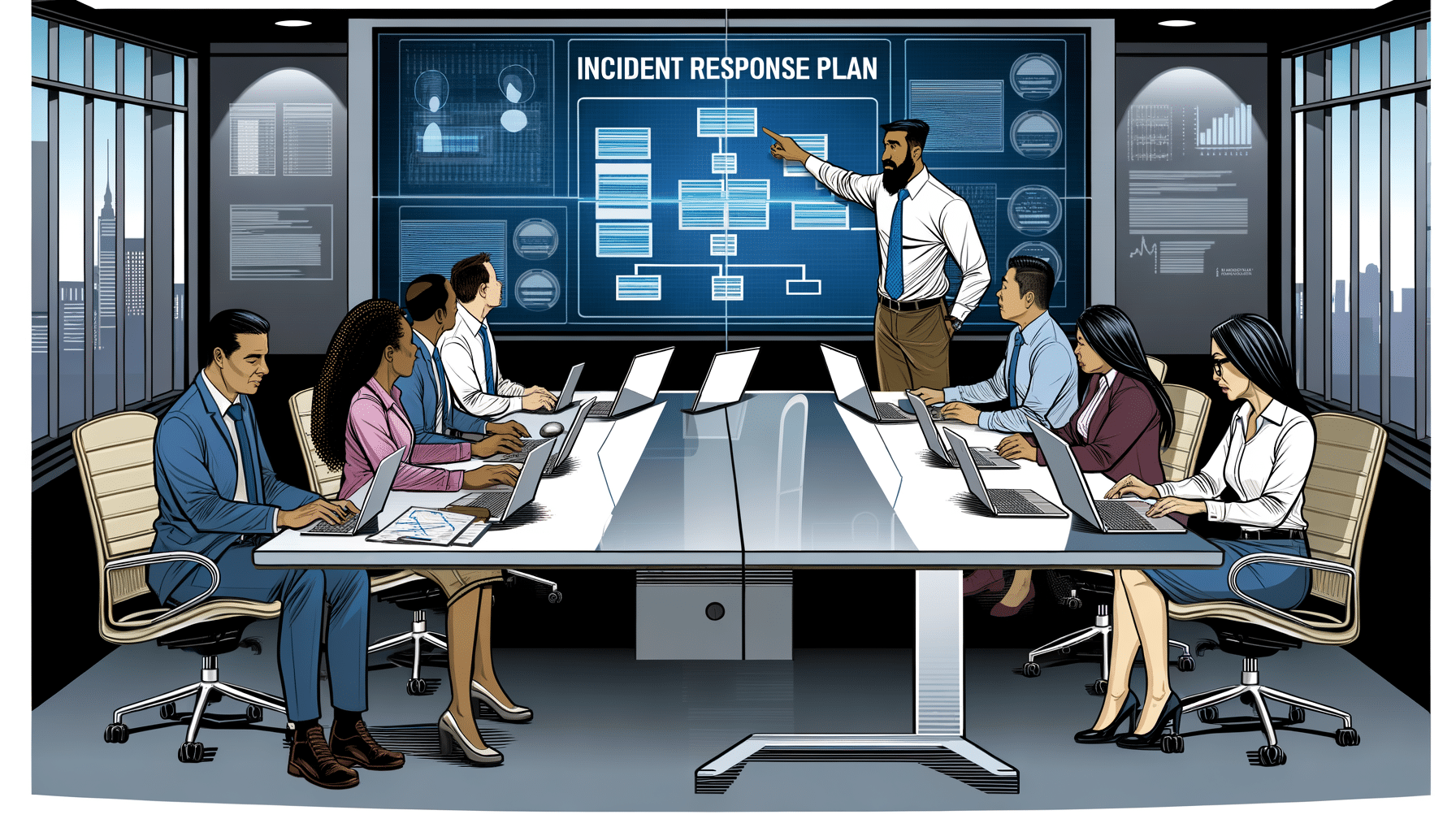- Crisis Management
- July 5, 2024
The Importance of Incident Response Plans for Government Record Systems

Enhancing Government Record Systems with Strategic Incident Response Plans
In today’s fast-paced digital landscape, the integrity of government record systems stands as a priority for ensuring seamless public service delivery and maintaining public trust. However, the challenges in these record systems can become monumental without an effective incident response plan in place. When it comes to incidents, whether cyber threats or data breaches, having a structured response plan is crucial for safeguarding sensitive data while minimizing disruptions.
Understanding Incident Response: The First Line of Defense
For me, as the founder of RecordsKeeper.AI, the concept of incident response is at the very core of what we offer to our clients. Incident Response is the strategic approach used to identify, manage, and recover from any situations that threaten to disrupt record systems, including cyber attacks or natural disasters. A comprehensive incident response plan (IRP) provides a blueprint that government departments can follow to ensure data security, maintain operations, and effectively communicate during a crisis.
Why Are Government Record Systems Vulnerable?
Government record systems are repositories of critical data such as personal information, financial records, and operational data. These record systems are attractive targets for malicious actors due to their highly sensitive nature. Moreover, with multiple stakeholders involved, the complexities and risks multiply. Here are the main vulnerabilities associated with these systems:
Strategic Components of an Incident Response Plan
When I first envisioned RecordsKeeper.AI, I wanted to ensure that any incident response framework incorporated our principles of security and reliability. Below are the strategic components integral to a robust IRP:
- Detection & Analysis: Early detection of potential threats is crucial. Use AI-driven tools for continuous monitoring to identify anomalies in real-time.
- Containment, Eradication, & Recovery: Act immediately to contain threats, eradicate the root cause, and recover system functionality with minimal disruption. Automated recovery mechanisms, like those in RecordsKeeper.AI, can be instrumental.
- Communication Plan: Develop a communication strategy for timely and transparent communication with stakeholders. Clear, honest communication is key to maintaining public trust.
- Training & Drills: Regular training and simulated drills ensure that your teams are well-prepared to handle real incidents efficiently.
Key Takeaways and Lessons from Implementing Effective IRPs
In light of my experience in developing RecordsKeeper.AI, here are a few insights I’ve gained on implementing effective incident response plans:
- Advance Preparation is Indispensable: Waiting for an incident to unfold is not an option. Prepare and plan for different scenarios to mitigate unforeseen risks.
- Simplify with Technology: Tools powered by AI and Blockchain, like ours, simplify and streamline response measures, ensuring data integrity and easy retrieval.
- Learn from Every Incident: Each incident should be a learning opportunity to refine your process and practices.
Practicing Proactive Response and Future-Proofing Systems
Across sectors, especially for government record systems, practicing a proactive approach and future-proofing systems against potential incidents is non-negotiable. Embracing an incident response plan not only protects and preserves the value within these systems but also bolsters compliance with data regulations and enhances resilience.
As technology continues to evolve, so do the threats that target record systems. Maintaining security and stability is about staying a step ahead, and that requires constant vigilance, innovation, and adaptability.
Engaging with Strategically Sound Solutions
Through my journey of building RecordsKeeper.AI, I have seen firsthand how instrumental carefully crafted technology platforms can be in fortifying incident response initiatives. With automated categorization and compliance-centric features, the platform integrates seamlessly with existing governmental frameworks, offering a robust safeguard for government data.
Conclusion and Call to Action
Given the critical nature of government records, implementing a well-rounded incident response plan isn’t just an added bonus—it’s an absolute necessity. By aligning business objectives with security protocols and harnessing innovative technologies, we can transform threats into opportunities for improving governmental resilience.
If you’re intrigued and want to explore more about securing and modernizing your organization’s record systems, I invite you to stay connected with our journey at RecordsKeeper.AI. Feel free to reach out, or follow me for more insights and updates related to record management innovations. Let’s take strides together in ensuring our future structures are deemed secure and evolving.
Toshendra Sharma is the visionary founder and CEO of RecordsKeeper.AI, spearheading the fusion of AI and blockchain to redefine enterprise record management. With a groundbreaking approach to solving complex business challenges, Toshendra combines deep expertise in blockchain and artificial intelligence with an acute understanding of enterprise compliance and security needs.
Related Posts

Ensuring Business Continuity with Financial Record Management During Crises
Strategies for maintaining financial records during disruptions.
- February 9, 2024
Archives
- January 2025
- December 2024
- November 2024
- October 2024
- September 2024
- August 2024
- July 2024
- June 2024
- May 2024
- April 2024
- March 2024
- February 2024
- January 2024
- December 2023
- November 2023
- October 2023
- September 2023
- August 2023
- July 2023
- June 2023
- May 2023
- April 2023
- March 2023
- February 2023
- January 2023
- December 2022
- November 2022
- October 2022
- September 2022
Want to get more content like this?
Signup to directly get this type of content to your inbox!!
Latest Post
Document Control for Equipment Maintenance
- January 20, 2025
Managing Records for Multiple Clients
- January 19, 2025
Handling Conference Documentation
- January 18, 2025
Setting Up Department Record Reviews
- January 17, 2025





